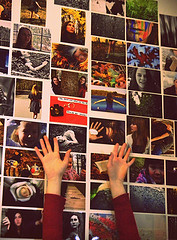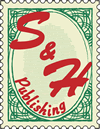The Storyboard
The Anatomy of a Book Trailer - Part 2
Enlarge

Where do we find the building blocks for a trailer?
Think about your goal.
Think about your message.
Think about your intended audience.
The limits are set by your imagination.
- Use individual artistic talent. Among the most notable examples of this are the trailers of Maggie Stiefvater. This is one such trailer, the result of hours and hours of painstaking work and stop action photography.
- Make your own video using family and friends as characters. The trailer for "The Uncertainty Principle" by Maria Elizabeth McVoy in the S&H anthology, Short & Happy (or not) is a fantastic example.
- Use an online program such as Go Animate that relies more on the narration than video. This will work well with humorous commentary, as in this very simple trailer by Richard Bunning. A slightly more sophisticated use of online program is Animoto that Dwight Okita used for his speculative fiction book, The Prospect of my Arrival. He animated a series of still pictures using the program to produce a very appealing trailer.
- Use purchased images. Making a trailer with a series of still images is very easy to do using PowerPoint, MovieMaker, iMovie, or another free software program.
- Use public domain images and remember to give credit. The image in this blog is an example. More about this later.
- Buy images from websites that sell "royalty-free" images. Remember royalty-free does not mean free. It means you can use the same image over and over without paying per use. Some of these are free, some are very inexpensive, and some aren't. There are many such sites: iStock, canstockphoto, iClipart, and many more.
- Buy videos and overlay your own text. iStock, Pond5, and Videoblocks are sites to investigate.
- Last but far from least is to use your own still photos. Lenora Rain-Lee Good went on a road trip tracing the steps of Madame Dorion as she researched the background of her book, Madame Dorion: Her Journey to the Oregon Country (published by S & H Publishing, Inc.) She used some of the many photos she took to produce this video designed to be played in a continuous loop during book signings.














Приватный чит для CS:GO – купить вх для ксго, купить вх для ксго
Предельный Инбокс
Уже примерно через четыре часа Лично вы гарантированно сможете иметь навыки, как наживать в глобальной сети интернет, расходуя всего-навсего тридцать минут в сутки, в том числе и если Вы еще новичок
С Сопровождением Вплоть до Результата. Без дополнительных трат! Без Знаний и Опыта
Не важно, сколько у Вас знаний, навыков и опыта. Именно здесь справится вообще любой!
Реальный постоянный доход. Подробнее – http://www.MAXINBOX.SITE
Хотел бы познакомиться с симпатичной девкой?
Кликни здесь.